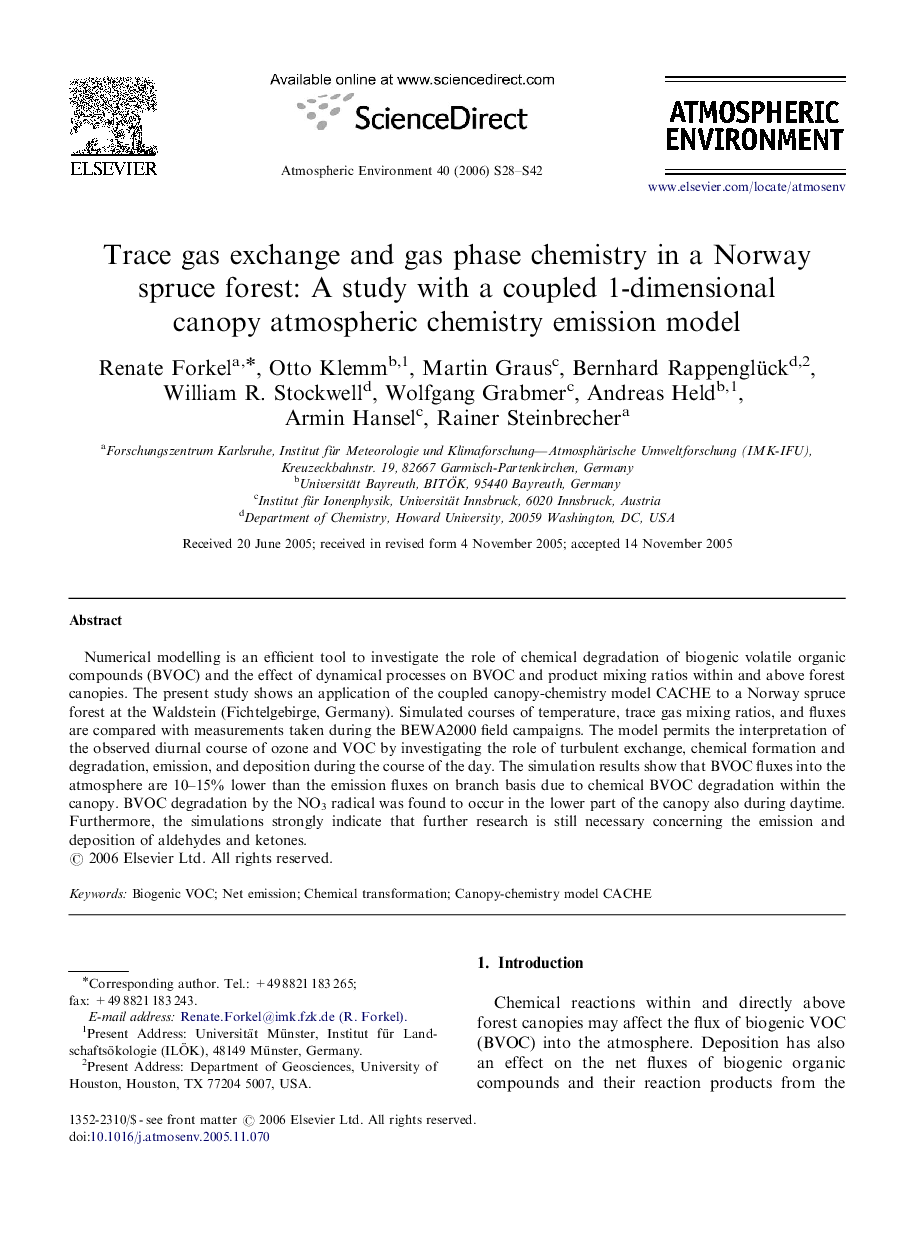| Article ID | Journal | Published Year | Pages | File Type |
|---|---|---|---|---|
| 4443889 | Atmospheric Environment | 2006 | 15 Pages |
Numerical modelling is an efficient tool to investigate the role of chemical degradation of biogenic volatile organic compounds (BVOC) and the effect of dynamical processes on BVOC and product mixing ratios within and above forest canopies. The present study shows an application of the coupled canopy-chemistry model CACHE to a Norway spruce forest at the Waldstein (Fichtelgebirge, Germany). Simulated courses of temperature, trace gas mixing ratios, and fluxes are compared with measurements taken during the BEWA2000 field campaigns. The model permits the interpretation of the observed diurnal course of ozone and VOC by investigating the role of turbulent exchange, chemical formation and degradation, emission, and deposition during the course of the day. The simulation results show that BVOC fluxes into the atmosphere are 10–15% lower than the emission fluxes on branch basis due to chemical BVOC degradation within the canopy. BVOC degradation by the NO3 radical was found to occur in the lower part of the canopy also during daytime. Furthermore, the simulations strongly indicate that further research is still necessary concerning the emission and deposition of aldehydes and ketones.
